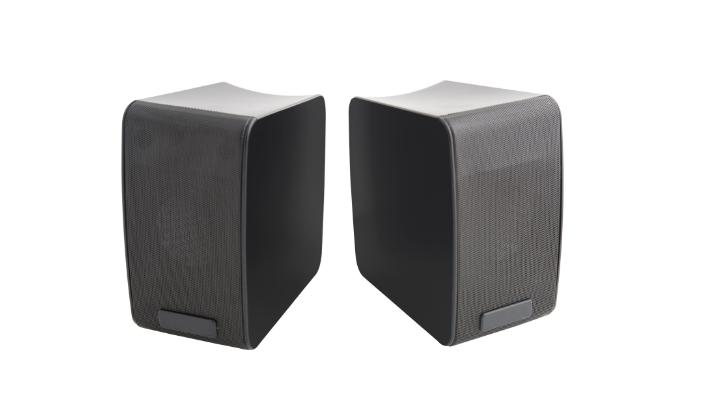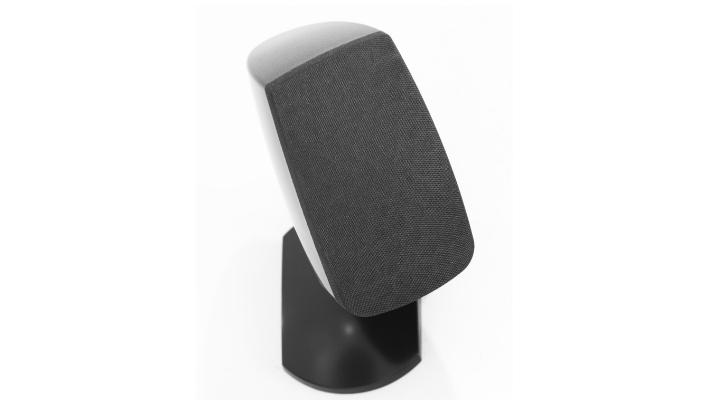Home theater speakers come in different sizes and shapes, and their sound quality varies from one speaker maker to another. While larger speakers give an impression of full sound, small speakers are considerably easy to integrate into any existing home theater setup.
Satellite speakers are some of the smallest speakers in the audio world, and they are a common choice for average audiophiles. Regardless of whether you need to add music to your bedroom or watch movies with rumbling surround sound effects, knowing what satellite speakers encompass will help you choose the best satellite speakers for your setup.
What are Satellite Speakers?
Simply put, satellite speakers are compact, low-powered speakers that are added to a standard home theater setup to create surround sound. Satellite speakers belong to the mini speakers’ category meaning you’ll need to add a separate subwoofer to boost them.

Satellite speakers excel in reproducing mid and high frequencies, but most importantly, they have a reputation for redefining the overall sound system. Often, the speakers are used as a part of either a 2.1 stereo sound or a more enhanced 5.1 surround sound configuration.
When used as a part of a 2.1(two speakers, one subwoofer) system, both speakers are used to reproduce stereo sound. However, this setup is suitable for music playing only. Alternatively, you can opt to use satellite speakers in the traditional 5.1(five speakers, one subwoofer) surround sound setup to reproduce surround sound and multi-channel audio tracks.
What’s more, you can use satellite speakers as a part of a larger sound system that incorporates floor standing and bookshelf speakers as the main speakers. In such applications, you can repurpose satellite speakers as side surround speakers or even as rear surround speakers to deliver an immersive surround sound experience in your living space.
However, it is important to note that satellite speakers are not limited to surround sound applications. Their compact nature allows you to use these speakers with just about any desktop application, including gaming applications, PCs, as well as pairing with your turntable.

How to Connect Satellite Speakers
The 2.1 speakers system is undoubtedly the easiest to set up since you’ll only be working with two satellite speakers and one subwoofer to add some bass. Ideally, a 2.1 channel system provides a significant sound improvement over cheap built-in TV speakers while providing a great way to enjoy music without the need for the typical center and surround sound channels.
For this setup, you may want to familiarize yourself with the role of each satellite speaker before you begin connecting them. The next thing you need to do is to choose a central listening area and angle both speakers at about a 30-degree angle towards you.
You may also want to keep both speakers at ear height level, but this will depend on your room design. When it comes to the subwoofer, you can opt to place it on either side of your listening area or any other spot that provides smooth and consistent bass notes. However, ensure to avoid placing the sub near a corner to minimize echo and consequently booming bass.
On the flip side, a 5.1 channel setup will have three front speakers, two satellite speakers for the surround sound, and a single subwoofer. When it comes to setting up the front left and right speakers, you can follow the same rules as a 2.1 setup.
However, with a 5.1 speaker system, a center channel is added for movie dialogue and soundtrack effects. Just as the name suggests, the center channel needs to be centered in your listening area as possible. When it comes to the surround speakers, you can mount both satellite speakers on either side of your listening area or mount them high on the rear wall.
To set up your satellite speakers, you’ll need to get an AV receiver with the capability of decoding the specific number of channels you’re working with. For instance, if you’re looking to build a 5.1 home theater setup, then you need to get an AV receiver with up to six channels (five speakers, one subwoofer).
Once the AV receiver is in place, all you need to do is to run speakers from the satellite speakers to the corresponding jacks on the receiver. The good thing is that the name of each speaker connection is clearly marked on the receiver panel to avoid confusion.

The best thing about satellite speakers is that you can always go for a wireless setup if you are not a fan of unsightly wire clutter. But does satellite speakers mean wireless speakers? While most people tend to confuse wireless speakers to mean satellite speakers, this is always not the case. Wireless speakers are not always satellite speakers, and in fact, a vast majority of conventional satellite speakers are wired.
If you don’t prefer wireless satellite speakers, you can opt to go with a wired system and find a way to hind the wires in your walls or wrap them nicely. Remember, even if you’re using wireless speakers, you’ll need to power them, so you’ll still need to deal with cables at one point or another.
Bookshelf vs Satellite Speakers
The satellite vs bookshelf is one heated debate that continues to puzzle new entrants in the industry. Since both are designed to be used as part of a larger home theater system, choosing between them remains a contentious issue among home theater enthusiasts.
What’s more, both bookshelf and satellite speakers come in a compact design, but the latter tends to be considerably small in size. Just as the name suggests, bookshelf speakers are designed to rest on a bookshelf, but you can place them on any elevated surface, including a tabletop and even on speaker stands.
Ideally, most bookshelf speakers are full range meaning they are capable of handling the entire sound spectrum. You can use bookshelf speakers to reproduce sound in a small-to-medium-sized room, and in addition, a good number of bookshelf speakers are powered and have the capability of providing a wider soundstage.
If you’re using unpowered bookshelf speakers, you may want to add a separate subwoofer to enable the speaker to produce high-quality sound and minimize low-frequency sound distortion. And due to their expansive acoustic range, bookshelf speakers are best suited for music listening, but you can also use them to watch movies.
On the contrary, satellite speakers focus primarily on the mid and high frequencies. Very few models come with a separate bass driver, so you’ll need a separate subwoofer to relieve the speakers the burden of reproducing low-frequency sounds and to allow the entire system to deliver optimal sound.
In addition, satellite speakers are optimized for surround sound effects, making them ideal for movies and surround sound applications. Furthermore, satellite speakers are relatively cheaper than their bookshelf counterparts, plus they are easy to incorporate into any sound system.
However, it is important to note that satellite speakers are generally meant to complement other speakers in your home entertainment system. On the flip side, bookshelf speakers can stand on their own, plus they provide a significant upgrade to your home theater setup.
Parting Shot!
Satellite speakers are undoubtedly some of the most versatile speakers you’ll ever find. They are the best bet for people looking for high-performance speakers but without dominating over the space physically. Furthermore, their size makes them a to-go for many home theater applications, thanks to their flexibility when it comes to placement and general application.

